'My blood would be on the hands' of State Department: Afghan ally left behind fears Taliban retaliation
On the morning of Aug. 19, Muhammad received an email from the U.S. Department of State with the subject line: “Hamid Karzai International Airport Visa For Your Departure.”
Attached to the email was a PDF of a United States visa with the State Department seal, and instructions similar to those issued in a security alert to U.S. citizens and green card holders in Afghanistan one day earlier.
“Please make your way to Hamid Karzai International Airport,” it read. Though the message contained a warning in bold, capital letters that “THE UNITED STATES GOVERNMENT CANNOT ENSURE SAFE PASSAGE TO THE HAMID KARZAI INTERNATIONAL AIRPORT,” it advised that the attached visa document “may facilitate your passage to the airport” and should be presented “to officials upon request.”
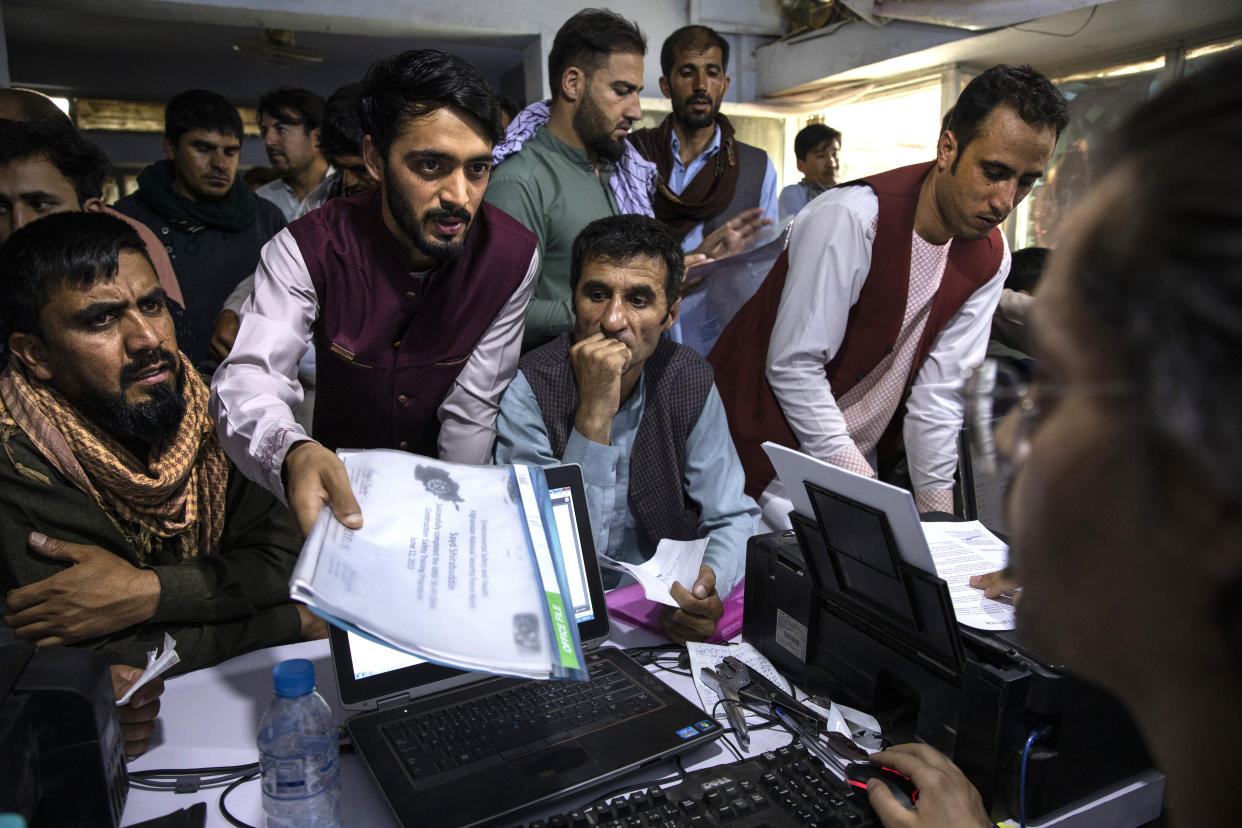
Muhammad, who asked that his real name not be used out of concerns for his safety, has worked for U.S. Army contractors and international nonprofits on U.S.-funded projects in Afghanistan since 2011. By the time the Afghan government collapsed last month, allowing the Taliban to seize control of the country’s capital, he was already in the process of applying for a Special Immigrant Visa, which, he hoped, would soon allow him and his family to safely relocate to the United States.
With his visa still in process, Muhammad said, he initially didn’t plan on joining the massive crowds of desperate Afghans who had gathered outside the Kabul airport after the U.S. began rushing to evacuate people after the Taliban’s takeover.
“I believe and respect the system and rules,” he told Yahoo News via WhatsApp.
So when he received the email telling him to go to the airport, he first sought to confirm that it was, in fact, from the State Department, and then promptly heeded its instructions.
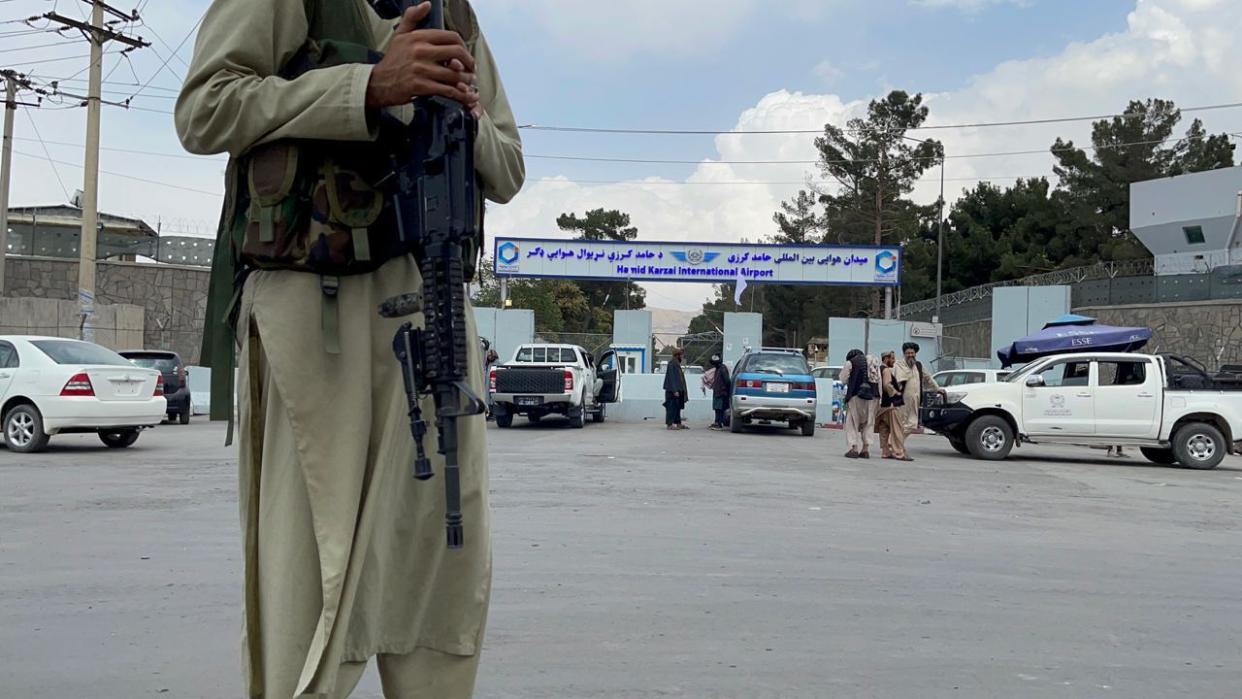
But the emailed visa did not facilitate safe passage for Muhammad and his family, who made two attempts to enter the airport, only to be blocked by Taliban fighters standing guard outside the gate. Now, one week after the final U.S. troops departed Afghanistan, they are among an unknown number of at-risk Afghans left behind in the country where their work for the U.S. or its allies over the last 20 years has put them at risk of reprisals from the Taliban.
Muhammad believes that he and his family now face even greater danger as a result of the State Department’s email, which encouraged them to go to the airport, where they would inevitably be subjected to Taliban surveillance.
“We were returned to home hopeless and the risk to the life doubled here because Taliban saw our faces and made sure we have worked with [the] U.S. Government,” Muhammad wrote to Yahoo News. He said his family has had to move three times since mid-August because of threats to their safety.
“We are scared of our shadow,” he said.
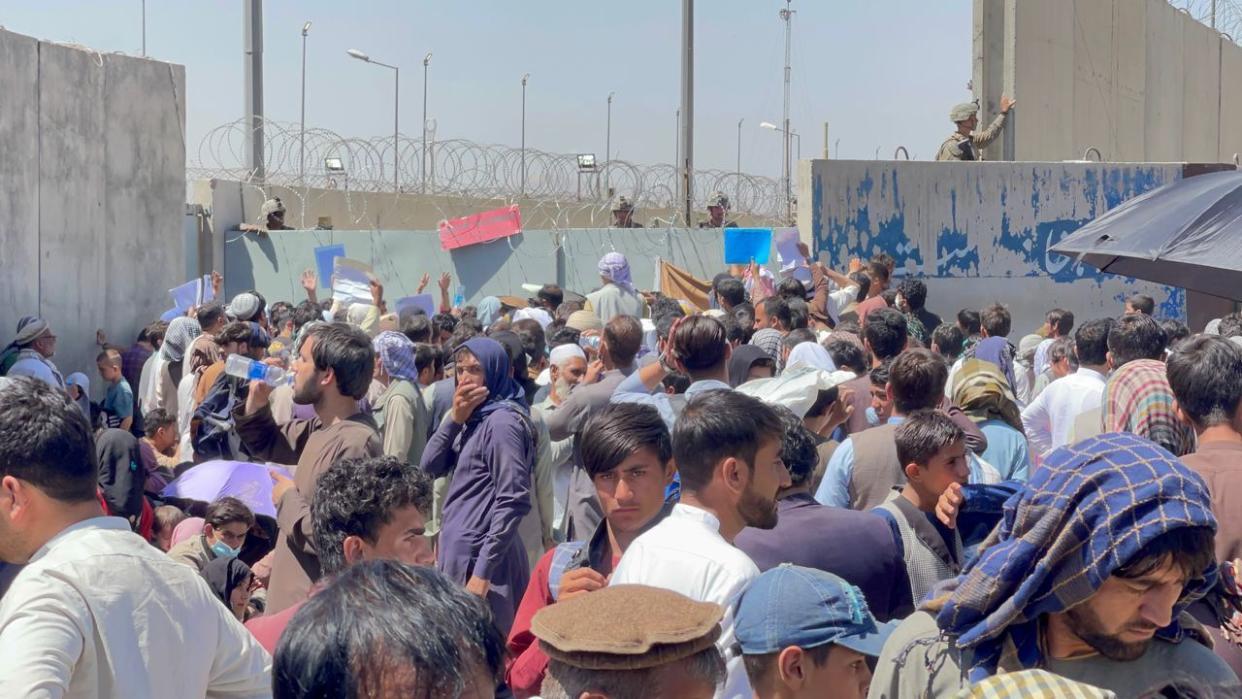
A spokesperson for the State Department declined to comment on Muhammad’s particular case, writing in an email to Yahoo News, “Visa records are confidential under U.S. law.”
“The United States mobilized an unprecedented, global effort through our diplomatic channels to evacuate U.S. citizens, personnel from partner nations, and at-risk Afghans from Kabul,” the spokesperson said in a statement to Yahoo News. “In total, the United States and our partners relocated more than 124,000 people to safety, including 6,000 U.S. citizens.”
Though officials have said the majority of those evacuated were at-risk Afghans, it’s not clear exactly how many were eligible for Special Immigrant Visas because of their work with the U.S. military or government. Last week, a State Department official told reporters that the majority of SIV applicants had not been evacuated.
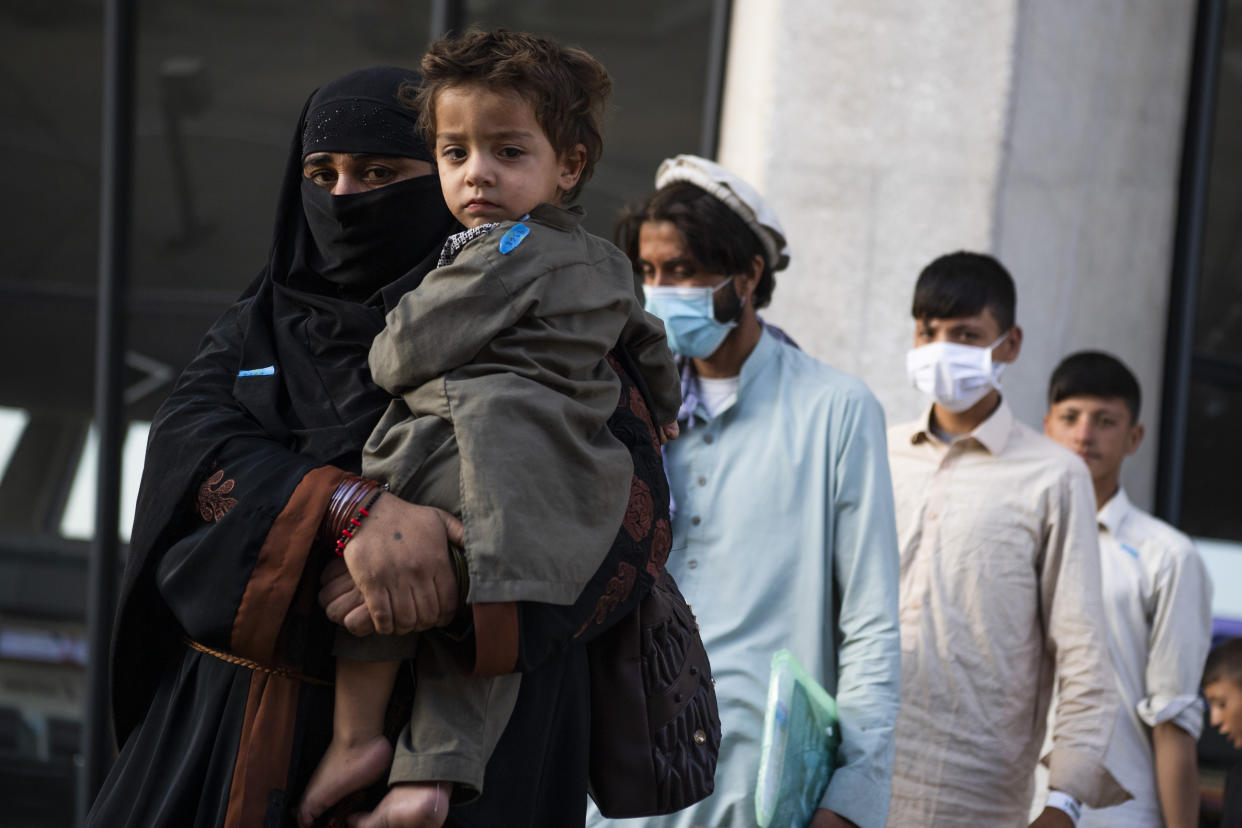
Muhammad always knew working for the Americans would make him a target for the Taliban, the Islamist movement that controlled most of Afghanistan from the mid-1990s until 2001, when they were overthrown in the U.S.-led invasion of the country following the 9/11 attacks.
A decade later, when Muhammad was hired by a U.S. Army contractor to work on a construction project in Afghanistan, he said, he and his Afghan co-workers immediately began receiving warnings “not to work with infidel Americans.”
In 2016, years after that first project was complete, Muhammad said, he was forced to move away from his hometown after receiving a direct threat from the Taliban. That same year, his former supervisor on the U.S. Army project wrote him a recommendation for the Special Immigrant Visa program, which was created in 2008 to help relocate and provide a path to U.S. citizenship for Afghan and Iraqi allies who “provided faithful and valuable service to the U.S. government.”
But Muhammad didn’t apply for a visa then. He didn’t necessarily feel safe in Afghanistan, but he’d been able to find steady work with international nongovernmental organizations on various other projects funded by the U.S. Agency for International Development, or USAID. Plus, he said, he never believed the Taliban would actually take control of the country again.
There were jobs in Afghanistan, and things seemed relatively peaceful. “I asked myself, why should I leave my country?” he said.
But things started to change after the Trump administration brokered a peace agreement with the Taliban in February 2020. The militant group seemed to be gaining power, and Muhammad began seeing threats circulating on social media warning that the Taliban would kill anyone who had worked with the Americans once the U.S. military left Afghanistan. This spring, after President Biden announced his plan to withdraw U.S. troops from the country at the end of August, Muhammad decided it was time to submit his application for a Special Immigrant Visa.
“I applied in May 2021 because [the] Taliban kept reaching me through any available platform,” he said. They “were saying that [the] U.S. Army would leave the country very soon and we would kill you along with your kids because you have constructed the buildings for our enemies.”

Publicly, Taliban leaders have sought to project a more forgiving tone, promising “general amnesty” for Afghans who worked for the U.S. military or the Western-backed Afghan government. However, by the time Muhammad received the State Department email on Aug. 19, reports had already begun to emerge about Taliban fighters going door to door and setting up checkpoints in search of former Afghan military officials and other U.S. or NATO “collaborators.”
On Aug. 20, Muhammad said, he made his first attempt to enter the Kabul airport along with his brother, his wife and their four children, all under the age of 10. Per the State Department’s instructions, they headed for the Camp Sullivan gate, which was controlled by the U.S. military. But before he could present his documents to the U.S. troops at the gate, they were stopped by members of the Taliban who refused to let them pass.
Muhammad said the Taliban fighters were allowing only those with passports from the U.S., U.K. and other countries to enter the airport. He said they told him, “You infidels are running after your war partner, but we will never let you fly [out] of this country.” He observed members of the Taliban sitting in guard towers taking pictures of the crowd, which he now fears will be used to track down and kill those who unsuccessfully attempted to flee.
Muhammad said that during their first attempt to evacuate, he and his family waited outside the airport for 30 hours, along with hundreds of others, some who had already been there for days, “without proper place to sit, sleep and no proper food or water.” Five days later, they attempted to go back to the airport but were thwarted by the Taliban again. This time, he said, they stayed from morning until night, forced to leave when one of his sons became sick from dehydration.
Throughout the evacuation effort, U.S. officials repeatedly said they were in constant contact with the Taliban, who had agreed to provide safe passage to the airport for American citizens as well as Afghan allies seeking to evacuate. But a recent New York Times report revealing new details about the chaos on the ground cites a State Department official who said the Taliban changed their criteria for who could pass through their checkpoints “on a day-to-day, sometimes hour-by-hour basis.”
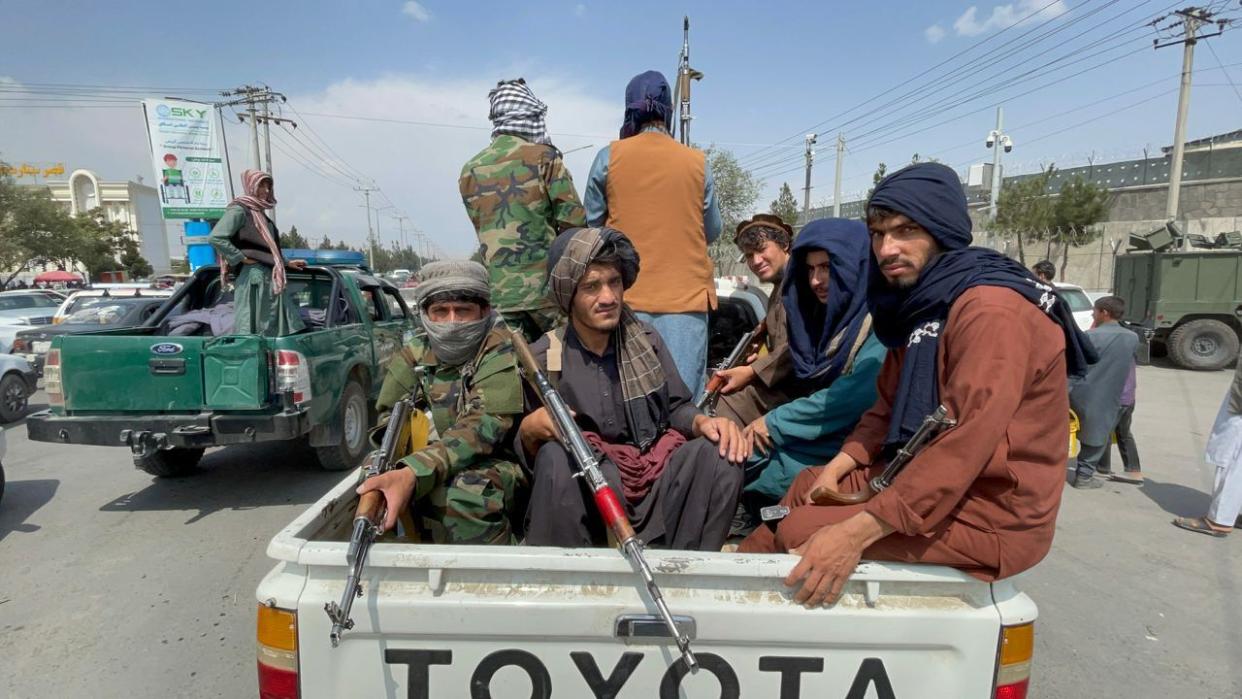
Muhammad requested that specific details about his work for the U.S. government not be published, out of concern that they could be used by the Taliban to identify him. But his former supervisor, who recommended him for the SIV program, confirmed his identity to Yahoo News and his previous employment with the U.S. Army contractor.
The supervisor said Muhammad wasn’t the only former employee he recommended for the SIV program, nor was he the only one still left in Afghanistan. In fact, he said that of the 25 Afghans for whom he’d written letters of recommendation over the years, he was aware of only four who had been approved for visas and were now living in the United States. He said the longest application still in process “dates back about five years.”
“I believe that 20 or more of the individuals I recommended are still in Afghanistan and in danger of being murdered by the Taliban,” the former supervisor told Yahoo News in an email last week. He said he’d recently received an email from one former employee who said that “several armed Taliban came to his home and terrorized him, his wife, and his three children while searching his home for any documentation he had worked on a U.S. government project.”
The former supervisor said he has sent emails to the State Department on behalf of some of his onetime employees in Afghanistan and even tried calling the office of Rep. Eric Swalwell, D-Calif., who had offered to assist Afghans in the U.S. who were trying to get their relatives out of Afghanistan. But he said he never received any response from either.
“I am worried for the safety of each one and their families,” he said. “I can not believe my country made promises that would have been very easy to fulfill, but have not.”

In the meantime, Secretary of State Antony Blinken has pledged to continue processing SIV applications and assisting Afghan allies who still want to leave Afghanistan even after the conclusion of the military evacuation.
“Helping these Afghans is more than a priority for us, it is a deeply held commitment,” he said during a press briefing on Friday. “And it is an ongoing one. We will do everything we can to keep it in the days and weeks and months ahead.”
Muhammad is skeptical. He said he still trusts the U.S. government and doesn’t regret his work with the Americans, but he believes the Biden administration is “not looking true and honest” in its statements about the evacuation of those who have been left behind.
He said he’s asking the administration “to correct their mistake, otherwise I would be killed along with my family and my blood would be on the hands of the authorities sitting in the Department of State.”
____
Read more from Yahoo News:


